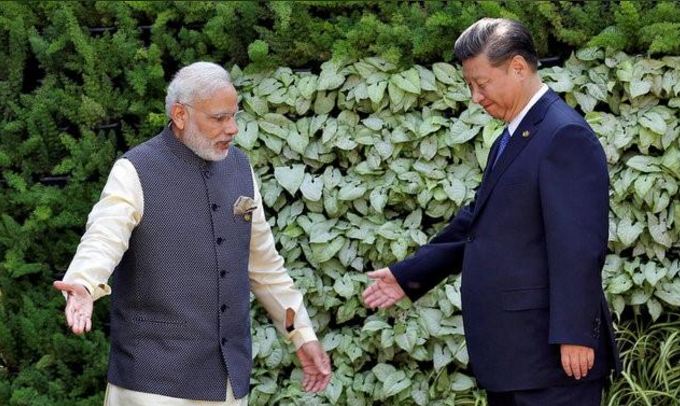
(TibetanReview.net, Aug29, 2017) – The standoff between India and China at Doklam Plateau in Bhutan near the border between Chinese ruled Tibet and India which has been on since Jun 18 has finally subsided with India saying Aug 28 that an “expeditious disengagement of border personnel at the face-off site has been agreed to and is on-going”.
India presented the development as a restoration of the status quo ante, which was what it has been seeking all along. On the other hand, China says it had checked to ensure that India’s “trespassing” troops had withdrawn from Doklam with their equipment, which was what it had been demanding while dismissing calls for talks to resolve the issue.
The indianexpress.com Aug 28 said Army sources in New Delhi had refused to divulge any details but stated that “disengagement had been agreed to and was in progress.”
On the other hand, China’s official Xinhua news agency cited the country’s Foreign Ministry spokesperson Hua Chunying as saying Chinese personnel had made the on-spot check around 2:30 pm (Beijing Time) of India’s withdrawal of personnel and equipment from Donglang (Doklam) after a months-long military stand-off. She has added that China will continue to safeguard its territorial sovereignty according to historical boundary treaties.
Reuters quoted Chinese foreign ministry as saying that “Indian forces have already withdrawn to the Indian side of the border.” The ministry was also cited as saying China’s forces “will remain in the region” and continue to exercise “sovereignty over the region”.
Furthermore, the timesofindia.com cited China’s foreign ministry as also saying it was “pleased” that Indian troops have withdrawn from Doklam.
However, China’s party mouthpiece, the People’s Daily, did say “China and India agree to end over 2-month-long standoff in Donglang”.
Further, thehindu.com Aug 28 quoted Hua as saying, “I have made myself clear that Indian side has pulled back all its personnel and equipment to the Indian side of the boundary. In the light of the changes of the situation, on the ground, China will make necessary adjustment and deployment(s).”
However, it laso quoted her as adding, “Chinese border troops continue to patrol in the Donglang area.”
Beijing’s comments came within an hour of India’s announcement that both sides had begun withdrawing troops.
Whatever be the case, the development has come ahead of a summit of the BRICS nations – a grouping that also includes Brazil, Russia and South Africa – scheduled to be held Xiamen, China, over Sep 3-5, with Indian Prime Minister Narendra Modi being expected to attend it. In the end this may be what led China to agree to end the standoff.
China had, through its official media, kept on talking about the imminence of war to resolve the issue and the possibility of it was not ruled out both by India and the international community. However both the sides took care to ensure that the situation at Doklam itself never escalated.
While China has all along maintained that there was no question of any talks being held over the standoff, insisting that India should simply withdraw from Donglang, India’s ministry of external affairs has said, “In recent weeks, India and China have maintained diplomatic communication in respect of the incident at Doklam.”
The dispute between the two sides erupted after India objected to the Chinese building of a road through the mountainous area which is claimed by both Bhutan and China. India intervened both to help Bhutan and because it sees the Chinese move as a strategic threat to it. Nearly 350 Indian soldiers had been standing face-to-face with 300 PLA soldiers in the area since June.


